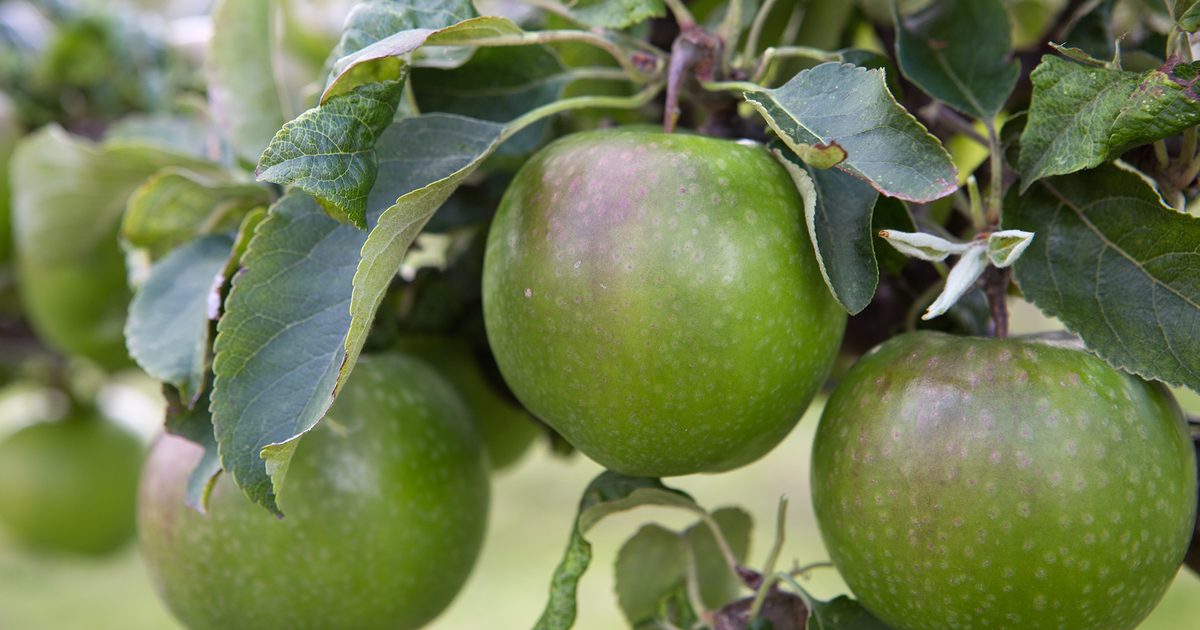[ad_1]
Raymond advises that the important thing of cooking apples will depend on choosing the right choice for a particular dish – you need the proper steadiness of acidity and sweetness, and texture is critical too.
Proper right here, Raymond shares 10 of his favourite varieties and the way in which he makes use of them.
‘Adam’s Pearmain’
This outdated reliable, English dessert apple has medium-size, barely russeted fruit. It is harvested in October and retailers for over three months. It has good sickness resistance. ‘I identical to the creamy flesh and rich nutty, almost dry flavour,’ says Raymond.
Pollination group: 2
Biggest for: purees and tarts
‘Blenheim Orange’
This dual-purpose dessert and cooking choice might be eaten raw when youthful or cooked when further mature. Harvest in early October; fruits retailer for two or three months. Raymond says: ‘That’s thought-about considered one of my favourite varieties as a result of it has a spicy, russet flavour and could possibly be very versatile – you must use it in so many different strategies.’
Pollination group: 3 (triploid)
Biggest for: purees and tarts

‘Bramley’s Seedling’
This cooking apple grows on vigorous, sprawling timber, so it is best for larger gardens solely. Harvest in November; fruits retailer for over three months. It has good sickness resistance. ‘For me that’s too acidic for normal cooking, nevertheless it absolutely breaks down into the right texture and flavour for purees,’ says Raymond.
Pollination group: 3
Biggest for: purees
‘Braeburn’
This dessert apple comes from New Zealand and may go proper right into a ‘sulk’ in cool summers, so it desires your sunniest and warmest nook. Compact, it’s good for small plots. Harvest in October or November; fruits retailer for 3 months. Raymond says: ‘I just like the tart, richly apple-y flavour.’
Pollination group: 4 (self fertile)
Biggest for: tarte tatin
‘Captain Kidd’
A dessert choice that is related to Cox’s Orange Pippin, with an equivalent flavour, nonetheless so much easier to develop. Harvest in November; fruits retailer for two months. ‘Aromatic and crunchy, with creamy-white flesh and an unimaginable flavour,’ is Raymond’s verdict.
Pollination group: 3
Biggest for: juicing and tarts
‘Cox’s Orange Pippin’
This apple has an excellent flavour nonetheless is often a bit temperamental – it’s comparatively disease-prone and dislikes the chilly and moist. Harvest in October; fruits retailer for 3 months. ‘World class!’, says Raymond. ‘This has the right flavour and is the right for savoury dishes on account of it’s not too sweet.’
Pollination group: 3
Biggest for: purees, tarts and tarte tatin
‘Granny Smith’
A dessert choice that wishes an prolonged, scorching summer season. Harvest in October; fruits protect for 3 months. Raymond says: ‘This has a refreshing acidity, which I like, and it moreover holds its texture somewhat nicely when sliced and cooked.’
Pollination group: 3
Biggest for: tarte tatin
‘Chivers Delight’
A dessert apple that is easy to develop and retailers correctly, for as a lot as three months. Harvest in October or November. ‘I’m eager on the rich, honey flavour of this apple, which is analogous to the Cox. And I like the way in which through which it ‘fluffs’ when it cooks with out disintegrating.’
Pollination group: 4
Biggest for: baking and tarts
‘Egremont Russet’
A small, russet dessert apple with company flesh. Harvest fruits in October; they will retailer for 3 months. ‘This has stunning layers of richness and acidity. The flavour is nutty and dry., and it turns into deeper when it is saved.
Pollination group: 2
Biggest for: juicing and tarts
‘Lord Lambourne’
A reliable, compact tree, turning out heavy crops of dessert apples, 12 months after 12 months. Harvest fruits in September; they will protect for two months. ‘I identical to the stableness of acidity and sugar, which provides a flowery, aromatic flavour. The flesh is crisp, too.’
Pollination group: 2
Biggest for: tarts
Rising for flavour
Raymond’s head gardener, Anne Marie Owens, shares her strategies for glorious apples:
- Choice is important, so go to an apple day to fashion as many types as potential, and develop solely what you want.
- Go for naturally disease-resistant varieties the place potential, significantly within the occasion you yard organically.
- Plant two from the equivalent pollination group, to reinforce cropping. Or develop a self-fertile choice.
- Skinny the fruitlets in July to a minimum of one or two per cluster, leaving the healthiest – you’ll get fewer fruits nonetheless they’ll be effective high quality.
- Maintain an area of soil away from weeds and grass spherical your tree, about 1m all through, to reduce opponents and improve progress.
- Feed timber each spring with slow-release fertiliser, resembling pelleted poultry manure.
- Depart late varieties on the tree for as long as potential to mature the flavour.
- Apples are completely ripe after they arrive away with a fragile twist.
[ad_2]